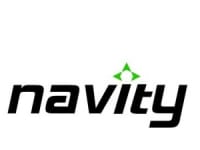The future of automated vehicles heavily relies upon a continuous and cost effective method, which demonstrates and maintains that these intelligent systems save more lives than human drivers. To say that they save more lives is tightly linked with being involved in fewer collisions. My technology presents a methodology to show how well automated vehicles do with preventing crashes as compared to certified driving evaluators during on-road driving sessions. In these sessions, a driving evaluator monitors the performance of a human driver and will intevene with steering or braking assistance. My technology solution records those assisted events in driving programs and will provide the time stamps to check the sensor and software results from collision avoidance systems in automated vehicles. From a vehicle test program perspective, you achieve the same validation without the risk of testing liability, cost of fuel, or salaries/benefits of test drivers...just put your cars in driving schools and compare notes against the driving instructor!
There are two more solutions to be monetized on the road to our grand challenge!
A. While working with driving schools, we can create high-fidelity driver training products to families with high-risk drivers (i.e. novice, medically-impaired/disabled, and older drivers). Navity's technology along with vehicle telematics (e.g. Snapshot by Progressive) could deliver a driver screening tool to advise physicians when their patient's health status declines or a medication prescribed is causing adverse effects. These services would be designed for a continuous, 6-mos, and monthly subscription package at 1/6th the cost of on-road driver's training.
B. The ability to transform the data from people's cars into respectful conversations on driver safety and constructive feedback tools for physicians to their patients will allow my company to fix a problem in the automotive insurance space. The vehicle telematics industry (mentioned above; using OBD2 readers) has platoed at only 10% market adoption within the growth of User Based Insurance. My company would like to serve as a trusted insurance broker that can help people annonymously shop for better coverage rates from month to month instead of just during major life events.
The enabling technology is the same from customized driver training/education to growth of User Based Insurance and even the validation of collision avoidance capabilities in automated vehicles. My system from Navity, Inc. records every instance of steering and braking assistnace from driving schools (US: 22,000) and provides valuable data visualization/fusion services to 25M high-risk drivers each year (3M teen drivers; 22M licensed drivers over age 70). Our services are then multiplied by the value we can bring to automotive insurance and automated vehicle developers in the ways that they can appeal to their customers, drivers across the world.
This product is at technology readiness level 6 with an initial pilot of 20 drivers and a follow on beta test planned by the fall of 2017. I have manufactured/assembled the entire system manually within a machine shop with rapid prototyping machines and look forward to reducing the cost of fabrication in volume of units.
Video
Voting
-
ABOUT THE ENTRANT
- Name:Nahom Beyene
- Type of entry:individual
- Profession:
- Nahom is inspired by:I am inspired by the future for Internet of Things and product automation (specifically Connected and Automated Vehicles!). Transportation/Mobility is a critical aspect in our Quality of Life and ability to safetly participate in society. I want to make everyday outside your front door a little easier, faster, and safer.
- Software used for this entry:Solid Works
- Patent status:pending








